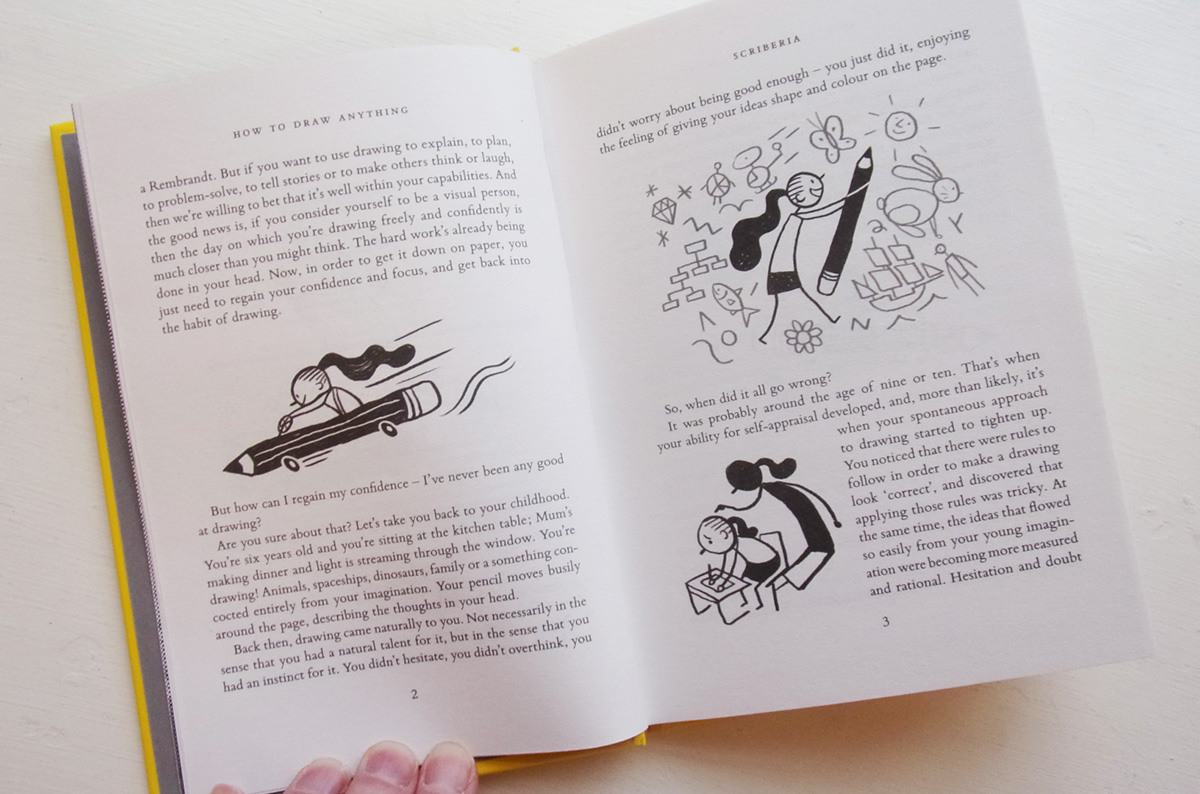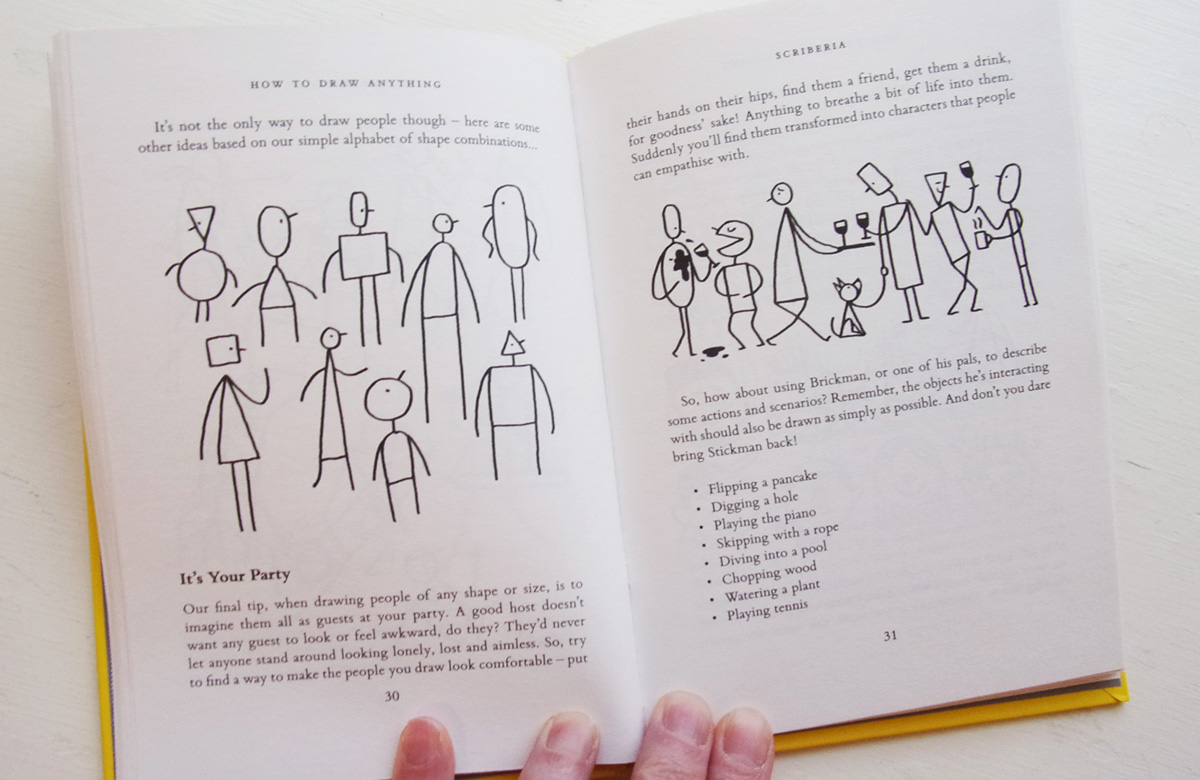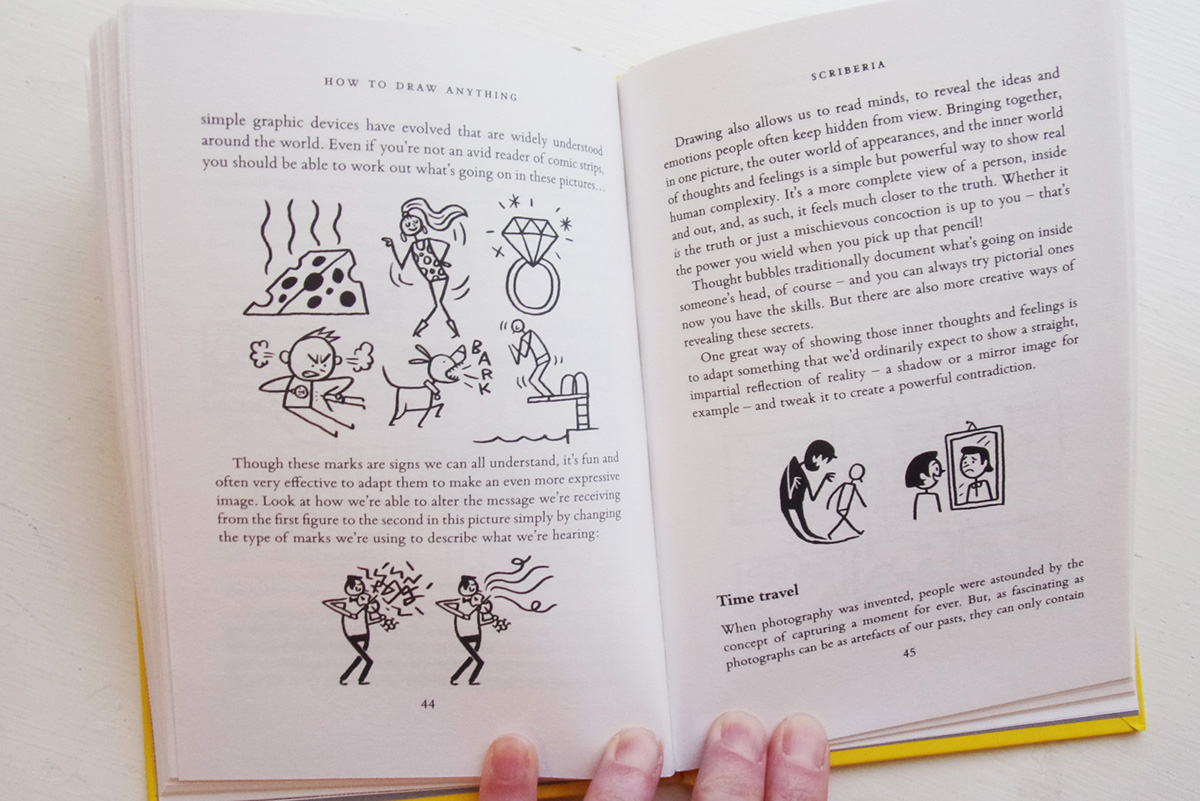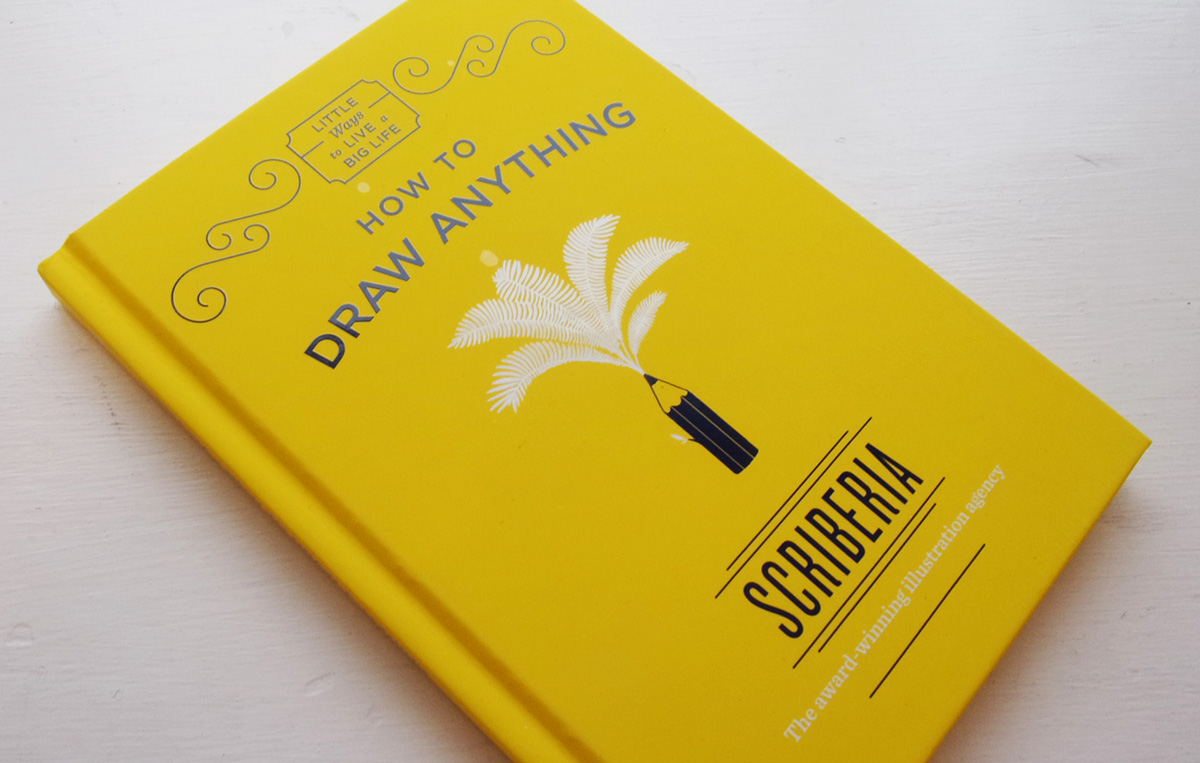How to Draw Anything – Book Review
From the series: Little Ways to Live a Big Life
By Scriberia
Published by Quercus Editions ISBN: 978-1-78648-539-7
Reviewed by Andy Robert Davies
Produced as part of the ‘Little Ways to Live a Big Life’ series from Quercus Books, ‘How to Draw Anything’ sits alongside titles that aim to show you ‘How to Play the Piano’ and ‘How to Land a Plane’! It is a well-designed object that, as you would expect, is full of illustrations that aim to help the reader achieve the title on the cover.
Numerous PhDs have been dedicated to the subject of drawing; discussing the cognitive processes and resulting visual communication that occur when a certain collection of marks is made on a piece of paper. Scriberia set out to discuss both of these aspects of drawing, but in a friendly, accessible and informal manner, and at around seventy-five pages long, it is rather shorter than the average thesis.

This book is a kind of manifesto of their practice, their belief in the act of drawing as a universal form of communication and so it should appeal to educators, students and practitioners of illustration. They specialise in various types of applied drawing that aim to capture ideas and act as a catalyst for conversation. Illustration such as this could be given the general definition of ‘Graphic Facilitation’ (although a more detailed description can be found on Scriberia’s website). It is now becoming an established form of contemporary illustration practice, growing in popularity with various businesses, keen to bring life and engagement into the meeting room environment. An awareness of this area (which this book introduces) will be useful to any illustration education environment, broadening graduates’ potential employment opportunities. It seems counterintuitive to say this, but illustration students can often find the act of drawing (especially in public) rather daunting.

This book is very good at encouraging the reader to pick up a pen and treat drawing as a visual jigsaw, an arrangement of shapes that when viewed together can result in a readable image. A broad overview of visual communication, composition, and character design are all provided here, and so reading this text will be of benefit to anyone beginning their illustration or design education.

Seasoned Illustrators may enjoy observing the practice of the highly talented Scriberia team; after all, Illustrators love finding out how other Illustrators come up with ideas and what tools they use! The authors contextualise their own views with that of numerous respected figures such as Henri Matisse, Milton Glaser and Chuck Jones, giving the reader an insight into how these artistic giants have also approached drawing. Scriberia attempt to demystify the act of drawing, without dumbing-down the process in any way. Visual communication is what it is all about, and drawing can be the means to that end. The black and white illustrations that populate the pages sit harmoniously with the text, and their simplicity and clarity help to substantiate the authors’ statements.

There are several blank pages at the end of the book that entice the reader to apply their newly acquired drawing knowledge, although the more daunted reader may be inclined to take the advice earlier in the book and begin scribbling on envelopes rather than in a ‘proper’ book. But perhaps this is the overall message of the book, stop being precious about the drawing, produce continuously and without fear of messing up the page and eventually you will produce an image that communicates to your intended audience.
Back to News Page

